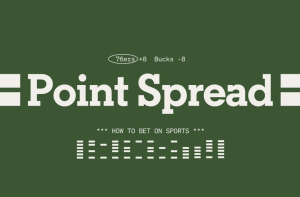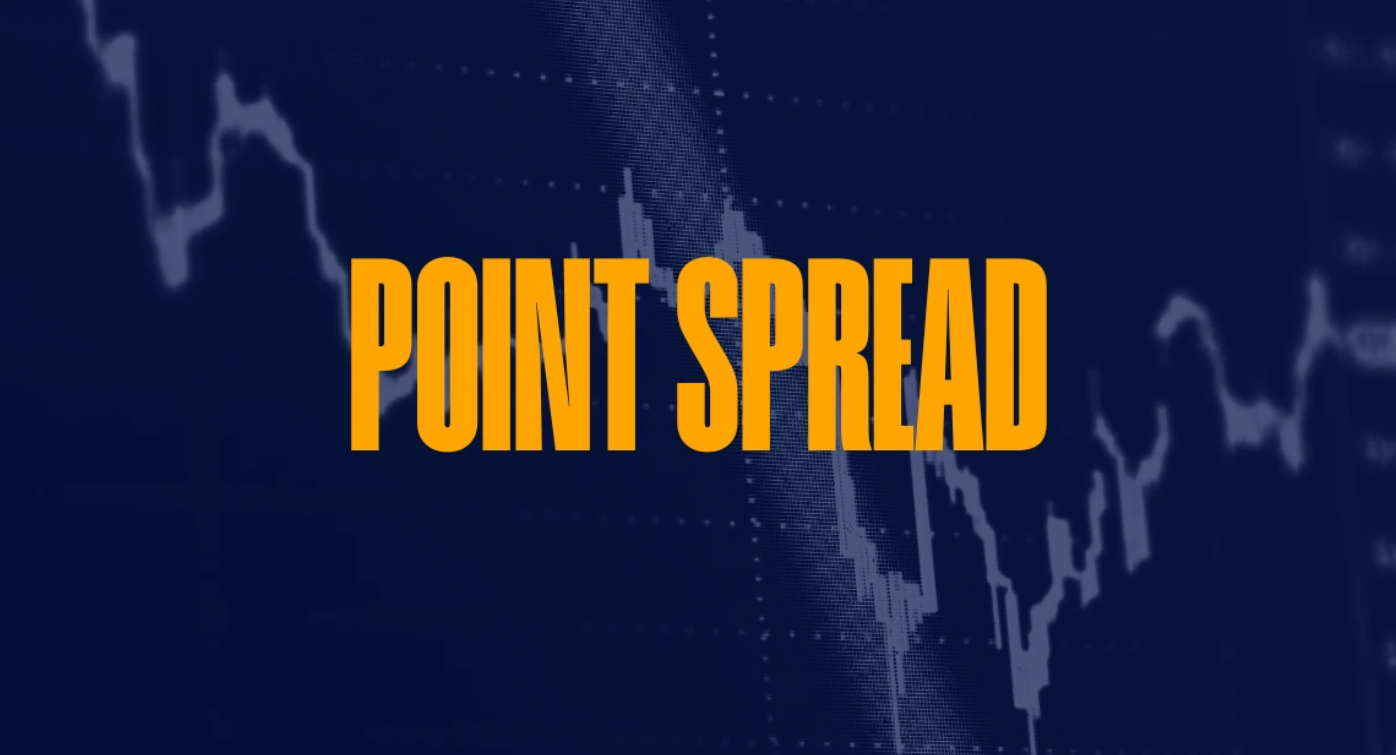Point spread betting explained pros and cons
Point spread markets in USA have transformed how millions of Americans engage with their favorite sports. Unlike simple win-or-lose wagers, spreads level the playing field between mismatched teams, creating balanced betting opportunities. This comprehensive guide breaks down everything beginners need to know about handicapping strategies, line movement factors, and smart bankroll tracking methods to make informed decisions.
Understanding the basics of point spread betting
To compete in the US sports betting ecosystem, understanding the point is table stakes. Point spread betting explained in simple terms: sportsbooks set a margin (the “spread”) to level the playing field between favorites and underdogs, turning every matchup into a balanced betting proposition.
With point spread betting, you aren’t just picking who wins—you’re predicting by how much a team will win or lose. This concept is a cornerstone for markets like NFL point spread, where the scoring margin drives the action.
What does point spread mean in sports betting?
A point spread represents the predicted margin of victory between two competing teams. Sports betting explained set this number to create equal betting action on both sides. When you see Dallas Cowboys -6.5 vs. Philadelphia Eagles +6.5, the Cowboys must win by 7+ points for spread bets on them to cash. The Eagles can lose by 6 or fewer points (or win outright) for their backers to collect.
This system addresses a fundamental challenge: what happens when elite teams face weaker opponents? Without spreads, everyone would simply bet on favorites. The spread forces bettors to consider whether the superior team will win by enough to cover the line, not just whether they’ll win.
Key terminology for beginners
Understanding betting juice and vig on spreads is crucial. That standard -110 means you risk $110 to win $100. Over time, this commission significantly impacts profitability, making line shopping essential.
How point spread betting works in practice

Point spread betting explained in real terms: it’s all about handicapping the matchup so both sides attract action. Instead of just picking the winner, you’re betting on whether a team will win by more than a specific number of points—or keep it closer than the line predicts. Here’s what the process looks like for US bettors, step by step.
The role of favorites and underdogs
Sports betting explained point spread explained starts with recognizing how odds reflect expected outcomes. Favorites carry negative numbers because they’re giving points to opponents. Underdogs receive positive numbers as they’re getting points added to their final score.
Consider this NFL scenario: Kansas City Chiefs -3.5 vs. Denver Broncos +3.5. If Kansas City wins 24-17, the 7-point margin covers the 3.5-point spread. Chiefs bettors win. However, if Kansas City wins 20-17, that 3-point margin doesn’t cover. Broncos +3.5 bettors collect despite their team losing.
Key numbers in football spreads matter tremendously. In the NFL, games commonly end with 3-point (field goal) or 7-point (touchdown) margins. Sharp bettors pay premium attention when lines sit at 3, 7, 10, or 14 because these numbers appear most frequently in final scores.
Pros and cons of point spread betting
Every betting market comes with its own risk-reward profile. The sports betting point spread explained at a basic level looks straightforward, but its real value—and challenges—are found in the details. Here’s what makes point spread betting so popular among US bettors, as well as the potential pitfalls you should consider before locking in your next wager.
Advantages of point spreads
- ✅ Competitive odds on mismatched games – You can profitably back dominant teams against weak opponents
- ✅ Lower variance than moneylines – Favorites don’t need to win outright by huge margins
- ✅ Strategic depth – Multiple handicapping strategies exist for analyzing spreads
- ✅ Better value – Standard -110 pricing beats heavy moneyline favorites at -300 or worse
- ✅ Closing line value (CLV) tracking – You can measure your betting skill against final market prices
Spread betting explained through advantages reveals why experienced bettors prefer this format. The balanced risk-reward at -110 means you need roughly 52.4% accuracy to profit long-term, compared to higher thresholds on moneylines.
Disadvantages of point spreads
- ❌ No win guarantee – Your team can win but fail to cover
- ❌ Backdoor covers – Late meaningless scores change outcomes
- ❌ Line shopping required – Half-point differences dramatically impact results
- ❌ Juice accumulation – That -110 vig compounds over many bets
- ❌ Complex for beginners – Understanding ATS records takes time
The psychological challenge hits hardest when your favorite wins convincingly but doesn’t cover. Betting psychology and discipline become essential as you learn to separate game outcomes from betting results.
When to choose point spread vs moneyline
- ✅ Betting heavy favorites (better value than -250+ moneylines)
- ✅ The matchup looks close (spreads offer standard -110 pricing)
- ✅ You have strong opinions on margin of victory
- ✅ Backing underdogs with positive odds
- ✅ The spread sits on key numbers (3, 7) where pushes are likely
- ✅ You want simple win-or-lose action
Best sports for point spread betting in the USA
Point spread betting is deeply woven into the fabric of American sports wagering. While nearly every sport can feature a spread, a few US leagues and events stand out for their popularity, liquidity, and opportunity. Let’s break down where point spread markets in USA are the most active—and where savvy bettors can find the edge.
Football: NFL and college football
NFL spread betting dominates American wagering. Every Sunday features 13-16 games with highly efficient spreads. The point spread for NFL games this week typically ranges from 1 to 14 points, with most falling between 2.5 and 7.5.
College football spreads can stretch much wider – occasionally 40+ points when powerhouses face weak programs. This creates unique opportunities as blowouts become less predictable. NBA point spread betting explained shows smaller numbers, but football’s scoring structure makes every point crucial.
Basketball: NBA & NCAA
Basketball uses similar mechanics but with different characteristics. NBA point spread markets typically range from 1 to 12 points, while college basketball mirrors these ranges. The higher-scoring nature means 10-point leads feel less secure than in football.
The NBA point spread adjusts constantly based on injury news and rest situations. Teams playing back-to-back games often see lines move significantly when stars are ruled out late. Sharp vs public money becomes visible as professional bettors exploit these information edges.
Baseball: run line as an alternative
The MLB point spread operates as a run line, almost always set at 1.5 runs. Unlike other sports, baseball uses the run line with adjusted odds rather than standard -110 pricing. Favorites might be -1.5 at +120, while underdogs get +1.5 at -140.
This format exists because baseball’s low-scoring nature makes larger spreads impractical. Most games finish within 1-3 runs, so the 1.5-run line creates the perfect balance point.
Hockey: puck line explained
Hockey’s puck line mirrors baseball at 1.5 goals. NHL games rarely exceed 6-7 total goals, making the 1.5-goal spread significant. Favorites typically need to win by 2+ goals, a challenging task even for elite teams.
Many professional bettors prefer hockey moneylines over puck lines because single-goal victories occur frequently.The adjusted betting odds explained on puck lines sometimes offer value, but require careful analysis.
Key strategies for successful point spread betting
Success in MLB point spread betting isn’t about luck—it’s about leveraging data, exploiting inefficiencies, and maintaining sharp discipline. The sports betting point spread explained in theory is simple, but turning knowledge into profit means bringing a professional approach every time you hit that bet slip.
Shopping for the best line across sportsbooks
Getting Green Bay -2.5 instead of -3 seems minor until you realize how often NFL games land exactly on 3. That half-point difference over hundreds of bets separates winning players from losers. Spread betting calculators help quantify this edge.
Opening accounts at 3-5 licensed sportsbooks lets you compare lines before placing wagers. Some books hang different numbers based on their customer base. If recreational bettors heavily back one side, sharp sportsbooks adjust their lines faster than square books.
The point spread NFL markets move throughout the week based on betting patterns and news. Professional bettors often wait until Saturday evening or Sunday morning to capitalize on the sharpest information and best available lines.
ATS (against the spread) explained through team performance shows some franchises consistently cover more than others. However, sportsbooks adjust for this over time, making historical trends less predictive than many bettors assume.
Setting a weekly vs monthly betting budget
Smart sports bettors in the USA know that the battle isn’t just against the oddsmaker—it’s also against their own impulses. One of the most effective ways to stay in control is by establishing a clear betting budget. Whether you prefer to manage your bankroll on a weekly or monthly basis, sticking to a disciplined plan helps you play the long game, avoid emotional swings, and track your progress with real numbers.
Why budgeting matters in sports betting
Bankroll tracking methods separate successful bettors from those who go broke. The point spread offers relatively low variance compared to parlays or teasers, but losing streaks still occur. Proper budgeting ensures you survive downswings while maximizing upside during hot runs.
Most professionals recommend the unit system: define one unit as 1-2% of your total bankroll. If you have $1,000 dedicated to sports betting, one unit equals $10-20. This approach scales naturally as your bankroll grows or shrinks.
Weekly budgets work well for casual bettors who focus on weekend games. Set aside a specific amount each Monday, and once it’s gone, you’re done until the following week. This prevents chasing losses during desperate moments.
Monthly budgets suit bettors who wager across multiple sports or follow teams throughout various schedules. The key is recalculating your unit size at the start of each month based on current bankroll.
Common mistakes to avoid with point spread bets
- ❌ Chasing steam moves blindly – Not every line movement signals value; sometimes public money pushes bad numbers
- ❌ Ignoring key numbers – Betting Chiefs -3.5 costs more risk than -2.5 for minimal perceived difference
- ❌ Betting every game – Selective wagering beats high volume with mediocre edges
- ❌ Overlooking vig differences – Finding -105 instead of -110 saves significant money over time
- ❌ Emotional betting – Backing your favorite team regardless of line value destroys bankrolls
- ❌ Poor record keeping – Without tracking results, you can’t identify strengths and weaknesses
The biggest trap involves confusing entertainment with profit-seeking. Betting odds explained shows that even 55% winners face losing months due to variance. Maintaining betting psychology and discipline through these swings separates pros from amateurs.
Step-by-step guide: placing your first point spread bet
- Step 1: Choose a licensed US sportsbook like BetWhale that operates legally in your state
- Step 2: Fund your account with a comfortable amount (start with $100-500 for learning)
- Step 3: Navigate to your preferred sport – football offers the easiest learning curve
- Step 4: Review available spreads and identify games where you have informed opinions
- Step 5: Compare lines across multiple sportsbooks if you have several accounts
- Step 6: Select your spread bet and enter stake amount (1 unit for beginners)
- Step 7: Review your bet slip carefully – confirm the spread, team, and stake
- Step 8: Submit the wager and save confirmation for your records
- Step 9: Watch the game and track whether your team covers the spread
- Step 10: Win or lose, log the result in a spreadsheet for performance tracking
FAQ
What does +7.5 or -7.5 mean in point spread betting?
The +7.5 means the underdog gets 7.5 points added to their final score for betting purposes. They can lose by 7 or fewer points (or win outright) for your bet to cash. The -7.5 means the favorite must win by 8+ points for your bet to succeed..
Can you push on a point spread bet?
Yes, but only when spreads don’t include half-points. If you bet Patriots -3 and they win 24-21, the 3-point margin exactly matches the spread..
Which sports in the USA use spread betting the most?
Football dominates, with both NFL point spread and college football generating massive betting volume. Basketball ranks second through NBA and NCAA action..
What is the difference between point spread and moneyline?
Spreads require teams to win by specific margins, while moneylines simply pick the winner. Moneylines feature variable odds – favorites might be -250 (risk $250 to win $100), while underdogs offer +200 (risk $100 to win $200).
Can I place point spread bets with crypto in the USA?
Most licensed US sportsbooks don’t accept cryptocurrency due to regulatory requirements. However, some platforms operating in specific states may offer crypto deposits that convert to USD for wagering.









